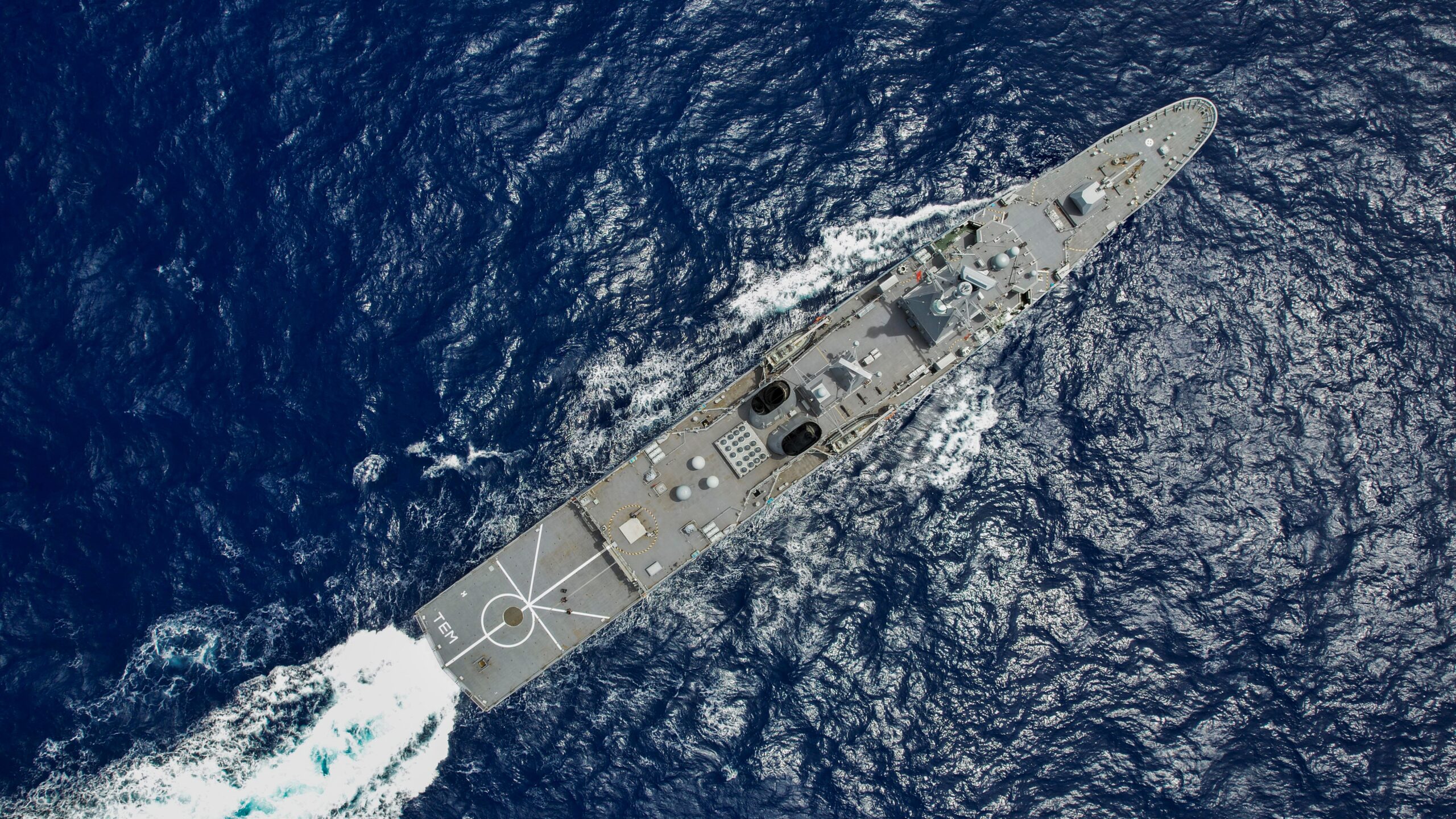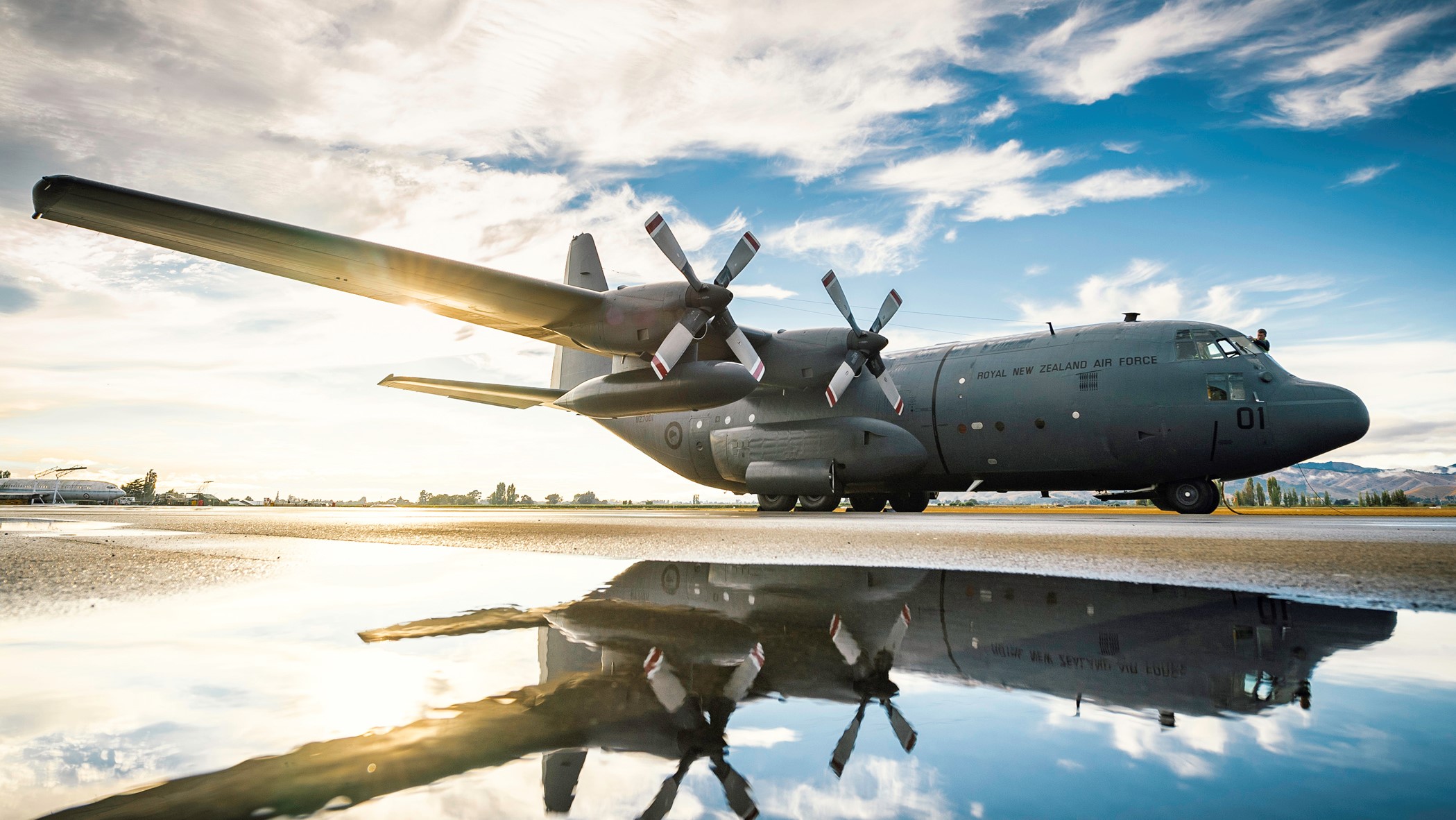
The HMNZS Te Mana recently went through an upgrade program. (New Zealand MoD)
AUCKLAND: New Zealand has been relatively protected from the security challenges that the world has been facing for the past few years. The emergence of an era of Great Power Competition and the strategic realignment process being undertaken by the US and its allies in Europe and the Indo-Pacific have somewhat passed New Zealand by.
That might be about to change. On July 7, the government of Prime Minister Jacinda Ardern announced a new review of its defense policy. Both the Russian invasion of Ukraine and a recent controversy over China’s ambitions with the Solomon Islands seem to be giving New Zealand extra impetus to lean forward strategically.
The Defence Policy Review document promises to “enable the delivery of a long-term strategy,” and will build on the earlier Defence Assessment 2021, published Dec. 8 2021. That document highlighted the strategic challenges of China and climate change as priorities and put engagement in the Pacific as a primary role for New Zealand, instead of focusing on homeland defense. Underlining that the Assessment marked a potential change in policy, an announcement this month described the December document as calling for a “a policy shift from a predominantly reactive, risk management-centered approach to one based on more deliberate and proactive strategy, with explicit and prioritized policy objectives.”
If this is policy change is adopted in the new Defence Policy Review document, it would represent a considerable shift in New Zealand’s outward approach to the world in defense and foreign policy terms.
Terence Johanson, a lecturer at the Centre for Defence and Security Studies in Massey University in New Zealand, told Breaking Defense that the current government’s Strategic Policy Statement from 2018 and corresponding Defence Capability Plan 2019 (DCP2019), while both identifying China and climate change as challenges, “still centered on New Zealand and the primary thing to defend – it was about territorial integrity,” he said.
To date New Zealand has been overly reliant on soft-power engagement and using low-end platforms and capabilities to engage with neighbors in the Pacific region, he noted. This may have been suitable for times past, but this is no longer the case.
“There has been an interest in the Pacific region but there hasn’t been a dedicated focus on how Defence would have influence. The Ministry of Defence were leaving that up to the Ministry of Foreign Affairs and Trade rather than being involved,” Johanson said.

New Zealand’s C-130H Hercules fleet are slated to be replaced with updated C-130J aircraft. (New Zealand MoD)
The review will be delivered in four “products,” the first of which is a defense policy and strategy statement in Oct. 2022 that will express New Zealand’s high level policy interests and objectives. This will be followed by a set of future force design principles in April 2023 that will outline the activities and scenarios expected the defense structures required to meet these.
The Cabinet will then decide whether to proceed with the development of the third and fourth products: a White Paper to finalize policy settings and a Defence Capability Plan to lay out the capabilities and funding levels for the future that would finalize the two-year review process.
Because of the long-term nature of procuring defense platforms and equipment there needs to be more detail in the first pair of products that will not just lay the foundations of the rest of the review but also make some early decisions about funding and procurement plans.
A New Defense Posture, If They Can Afford It
While completion of the full review is a ways off, the language of the review’s terms of reference suggests that a more proactive defense stance comes with a more threat-based approach to defense planning. This means directing funding for the New Zealand Defence Force (NZDF) towards capabilities that would best defend the Pacific against Chinese encroachment and platforms that can best manage the effects of climate change.
This could mean either reversing some of the defense procurement decisions taken in the DCP2019 that saw plans to replace the Royal New Zealand Navy’s (RNZN’s) ageing frigates pushed beyond 2030, or the acceleration of projects expected later in the decade to improve maritime domain awareness or purchase an amphibious ship like a landing platform dock.
However, this would require a corresponding increase in the defense budget, which has been stretched in recent years and barely provides enough funds to enable NZDF to retain its existing capabilities.
Defense spending has increased over the past five years since the Labour government was elected in 2017, rising from NZ$3.165 billion in FY2017-18 to NZ$4.63 billion in FY2021-22, a range of $1.97 billion to $2.88 billion US. The latest budget for FY2022-23, published in May, announced a further rise to NZ$4.898 billion (just over $3 billion US) and it is expected to exceed NZ$5 billion for FY2023-24 before reducing again in the years after.
Despite the increases, plans for a new Southern Ocean Patrol Vessel to meet an urgent naval requirement were shelved in March. This suggests that funding remains tight and any plans to boost hard power capabilities of the NZDF will be limited — and despite the intentions of the new review, additional assets needed may well be unaffordable.

New Zealand Prime Minister Jacinda Ardern speaks at the Lowy Institute, an Australian foreign policy think tank, on July 7 about New Zealand’s security challenges in the Pacific. (Peter Morris, Lowy Institute)Furthermore, when speaking to the Australian think-tank the Lowy Institute on July 7, Ardern indicated that Wellington will maintain a cooperative approach towards China, taking a middle road in relations that is some distance from the robust approach of allies such as Australia and the United States. This means there could be a disconnect between New Zealand’s foreign policy direction and a more threat-based policy in defense.
Of course, the policy disconnect may also be a factor of reality. Johanson said that it is questionable whether a country the size of New Zealand will be able to generate enough hard power in terms of offensive or combat capabilities to actually impact any combat situation with China.
“Quantity is a quality of its own. With an army of 5,000, and a navy of 2,000 and air force of 2,000 the NZDF is only going to be able to generate so much hard power and whether that would be a credible deterrent to China or anyone else” is an open question, he said.
There are ongoing efforts to modernize what equipment New Zealand has. The Royal New Zealand Air Force is replacing older P-3 Orion patrol aircraft with four P-8A Poseidon maritime patrol aircraft, and its older C-130H transport planes with five C-130J tactical transport aircraft. The first of the P-8As is expected to be delivered by the end of 2022. Meanwhile the Army is taking delivery of 43 NZ5.5 Bushmaster protected mobility vehicles to replace its existing Pinzgauer vehicles, with the first also slated to arrive later in 2022.
The Army is rolling out new equipment under its Network Enabled Army project that will provide its formations with an improved sovereign tactical and strategic networking capability. Meanwhile the RNZN’s second frigate, HMZNS Te Mana, arrived in New Zealand on July 8 after a three-year Frigate Systems Upgrade project in Canada. The RNZN has also taken delivery of a new tanker HMZNS Aotearoa and a new diving and hydrographic survey ship HMZNS Manawanui over the past couple of years.






















